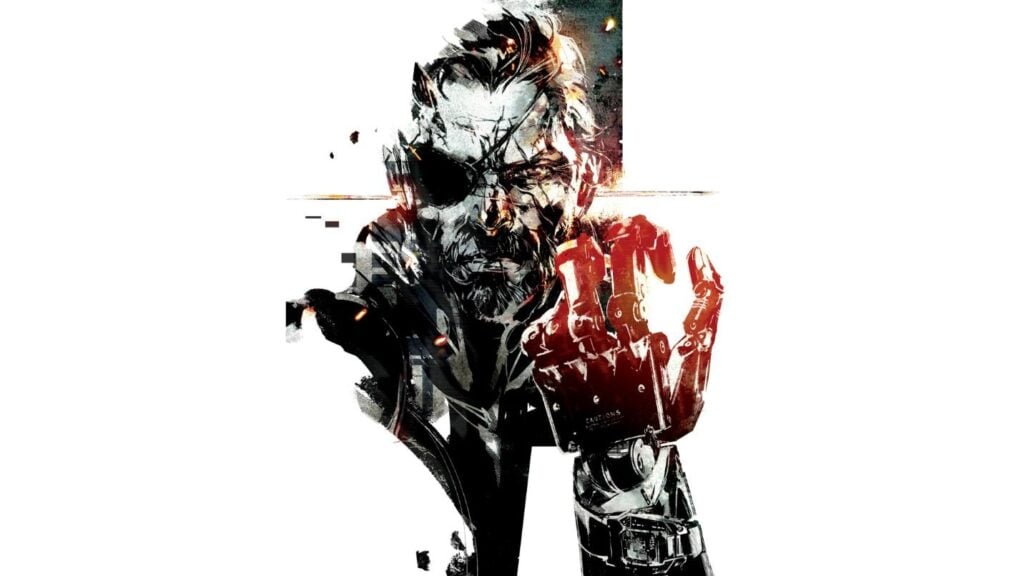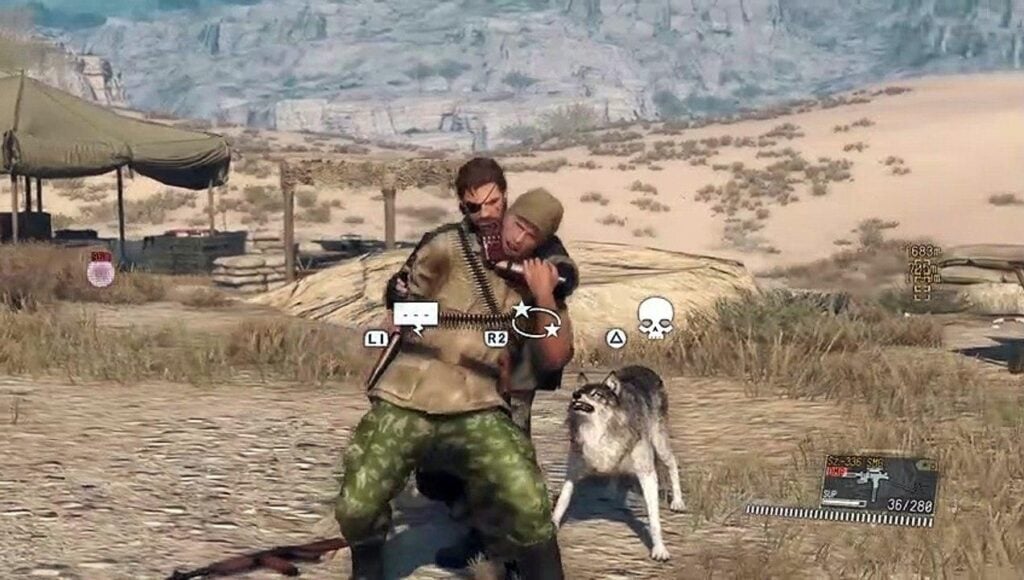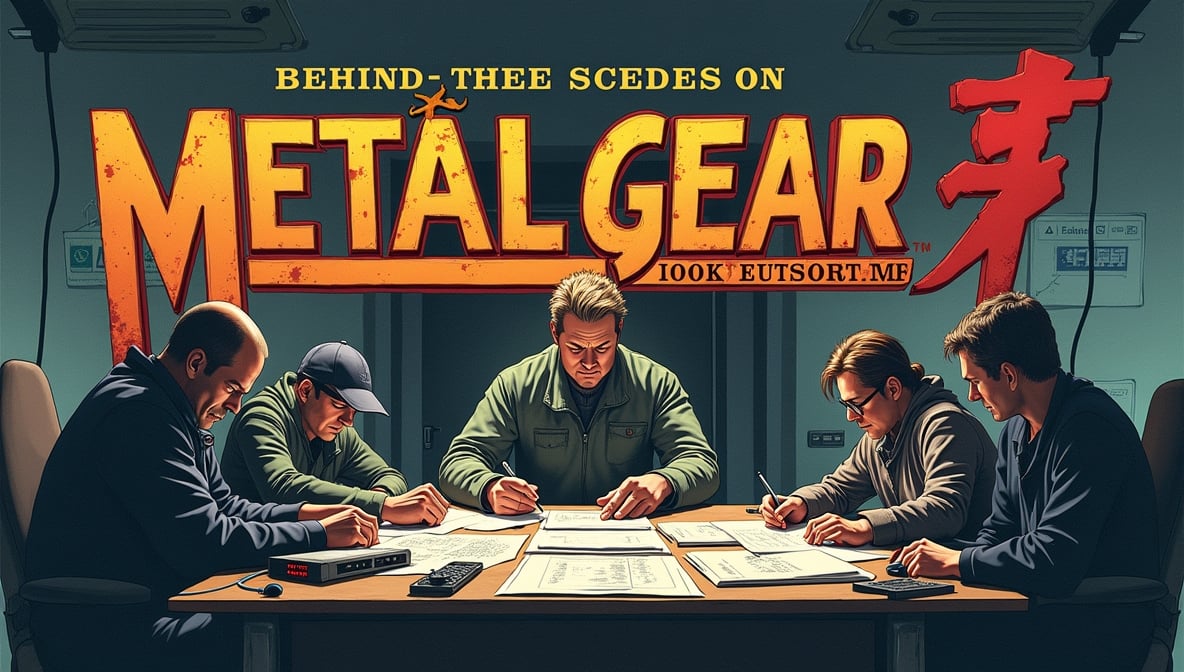It’s hard to fully appreciate today just how seismic Metal Gear Solid felt back in 1998. Picture this: the PlayStation was packed with explosions, racing games, and arcade-style action everywhere you looked. Then along came this stealth game where the point wasn’t to shoot everyone — it was to avoid being seen. Cinematic camera angles, fully voiced cutscenes, and writing that actually made you stop and think. Players had never seen anything like it, and many instantly began asking, “Why was Metal Gear Solid so groundbreaking?” The answer is simple: because it fused the language of cinema with the interactivity of games in a way that made your controller feel like a director’s tool. This is the story of the making of Metal Gear Solid.

1. From Metal Gear to Metal Gear Solid — Making of Metal Gear Solid
The seeds were planted in the late ’80s with Metal Gear (1987) and its Japan-only sequel Metal Gear 2: Solid Snake (1990). Both were 2D top-down stealth-action titles for the MSX2, built around avoiding conflict rather than embracing it. Think of them as blueprint sketches for a much grander plan.
By the mid-’90s, Kojima smelled opportunity. The jump to 3D on PlayStation meant he could finally realize his dream of making a “movie you could play.” When fans asked “Why did the series shift from top-down 2D to cinematic 3D?” Kojima explained in interviews that storytelling ambitions had always outgrown the old hardware — 3D presented the canvas he’d been waiting for.
2. Narrative Design — Building a Spy Thriller in Game Form
Booting up MGS, you weren’t dropped into a random mission brief; you were placed in an opening cinematic that played like a Hollywood thriller. Codec calls acted as your lifeline, with characters feeding you intel mid-operation — and occasionally, a bit of dry humor.
So “Who wrote Metal Gear Solid’s story?” Hideo Kojima himself penned most of it, pulling inspiration from films like Escape from New York and The Guns of Navarone, as well as real Cold War history. And “Why does the game feel like a movie?” — it’s because Kojima directed it like one: deliberate pacing, cliffhanger cutscenes, and framing shots like a film storyboard.
3. Technical Leap — The PlayStation Powerhouse
In the context of the making of Metal Gear Solid, the secret to MGS’s immersive feel was how much the team squeezed from the PlayStation’s limited horsepower. The console’s 33.8688 MHz CPU didn’t sound impressive even then, but the team worked miracles with fixed-angle cameras, stealth-friendly shadows, and clever polygon arrangement.
Players often wonder, “How did the developers push the PlayStation to its limits?” — the answer included streaming new area data in real-time to prevent loading screens, scripting cinematic events into gameplay without breaking flow, and animating NPC AI so they reacted naturally to sound and sight instead of simply walking patterns. These technical tricks gave the illusion of a bigger, smarter world.

4. Core Gameplay Design — Defining Stealth Mechanics
MGS didn’t just flirt with stealth — it committed to it. Guards had vision cones, reacted to noise, and called for backup. If you were spotted, you entered “Alert” phase, and a tense cat-and-mouse ensued.
And “Why focus on stealth instead of pure action?” Kojima wanted tension. Shooting everyone wasn’t just morally different; it removed the drama of carefully planning your route. The team balanced realism (guards couldn’t see through walls) with player empowerment (hiding in lockers, distracting enemies), making you feel like an elite operative without requiring pixel-perfect execution.
5. The Human Element — The Team Behind the Mission
Though Kojima was the public face, he wasn’t working alone in the making of Metal Gear Solid. Yoji Shinkawa’s iconic character designs gave us sleek, immediately recognizable silhouettes for Solid Snake, Ocelot, and Sniper Wolf. Kazunori Yoshizawa led programming innovations like enemy AI routines. The sound team recorded everything from real weapons cycling to footsteps on different surfaces, giving the game an ASMR-like tactical texture.
If you’ve asked, “Who were the key people that made MGS possible?”, know that over fifty developers contributed, each synchronizing gameplay, visuals, and story so there were no loose threads between design and narrative.
6. Innovative Boss Battles — Gameplay Meets Storytelling
Bosses in MGS weren’t just damage sponges — they were puzzles. Revolver Ocelot’s duel taught ricochet angles, Vulcan Raven turned stealth into environmental warfare, and Sniper Wolf tested patience and precision over long distances.

And then there was Psycho Mantis. Mantis didn’t just fight you; he broke the fourth wall — reading your memory card, making your controller vibrate, and forcing you to plugin your controller into port 2 to win. Players asking “How did the boss fights break gaming conventions?” could point to that fight alone, which became gaming folklore overnight.
7. Overcoming Development Challenges
MGS’s ambition was both its strength and its challenge in the making of Metal Gear Solid. Voice acting needed to work in both Japanese and English, with lip-sync and emotional delivery intact — not easy when you’re lip-flapping polygons. Budget constraints also forced creative cropping of cutscenes to hide expensive animations without losing cinematic feel.
When fans ask, “What were the hardest parts of making the game?”, the team consistently mentions balancing performance on PS1 without sacrificing immersion. Every guard’s AI routine cost processor time, every large environment ate into texture memory — every choice was a trade-off.
8. Release, Reception, and Cultural Impact
Marketing leaned into the cinematic tone, with trailers cut like movie previews. Upon release, reviewers lauded it as a masterpiece. It sold over six million copies globally, and critics hailed it as the game that made stealth its own genre rather than an occasional gimmick.
So “Why is MGS still considered a masterpiece today?” Because its DNA is in countless games we now take for granted — Splinter Cell, Hitman, Deus Ex, even narrative-heavy experiences like The Last of Us. Once you’ve played MGS, you start to notice how much it changed expectations for games as a storytelling medium.

9. Legacy — The DNA of Metal Gear Solid in Modern Gaming
The influence didn’t fade with time in the making of Metal Gear Solid. Future Metal Gear entries — from Sons of Liberty to The Phantom Pain — expanded its systems, but the heart was the same stealth-cinema mix. And beyond its own franchise, its emphasis on blending narrative pacing with player agency inspired generations of designers.
When someone asks, “Is Metal Gear Solid’s influence still felt in modern games?” I think about every time a cutscene blends seamlessly into gameplay, or when enemy AI flanks you like they actually want you gone — that’s MGS’s fingerprint.
In Conclusion — A Stealth Legend Forged in Vision and Grit
Looking back at the making of Metal Gear Solid, Metal Gear Solid wasn’t just a game — it was a proof of concept that games could match, even surpass, the emotional depth and spectacle of Hollywood. It took Kojima’s stubborn commitment to vision, a team willing to wrestle hardware to its knees, and a fearless approach to breaking every rule of what an “action game” was supposed to be. For new players, it’s a piece of history worth experiencing. For those of us who were there in ’98, it’s the reminder of the moment when video games stopped merely entertaining us — and started speaking to us.
FAQs
Q1: Did Metal Gear Solid have any gameplay features cut before release?
Yes — early prototypes included more complex civilian AI in outdoor areas, but they were cut to maintain performance stability.
Q2: What was the biggest difference between the Japanese and international versions?
The Japanese version had slightly less violence in certain cutscenes and some different voice direction, while the international version added extra difficulty modes.
Q3: How long did it take to develop Metal Gear Solid?
Roughly three years, starting pre-production in 1995 and releasing in 1998.
Q4: Did Kojima expect Metal Gear Solid to become a hit?
In interviews, Kojima admitted he was nervous — he knew it was ambitious, but the global success exceeded even his highest hopes.


